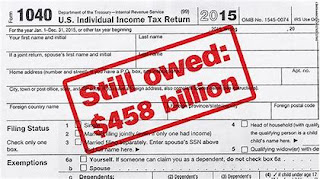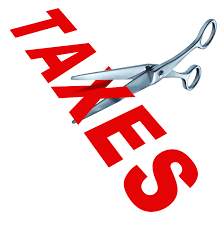 On May 9, 2019, the House Ways & Means Committee held a hearing about the "tax gap" — the difference between the amount of taxes owed and those paid on time. The IRS needs more revenue officers and resources.
On May 9, 2019, the House Ways & Means Committee held a hearing about the "tax gap" — the difference between the amount of taxes owed and those paid on time. The IRS needs more revenue officers and resources.
“The most recent Internal Revenue Service estimate of the annual gross tax gap is about $460 billion and, after enforcement activities and late payments, the net amount is $400 billion a year,” said House Ways and Means Committee chairman Richard Neal, D-Mass., in his opening statement. “Despite this astounding number, the true tax gap is greater than what the IRS estimates. This is because the IRS estimate does not include taxes owed on income from illegal activities or taxes avoided on certain international activities. The tax gap simply represents estimates of different types of noncompliance with our individual, corporate, and other tax laws.”
He pointed out that there is noncompliance in the form of underreporting, which includes taxpayers who understate their income or overstate their deductions, exemptions, or credits. That accounts for nearly $390 billion of the gross tax gap. Noncompliance by taxpayers who file their tax returns but fail to meet the deadline to pay what they owe accounts for about $40 billion of the gross tax gap.Then noncompliance by taxpayers who are required to file a tax return, but don’t accounts for about $32 billion of the gross tax gap. Neal pointed out that the amount of the tax gap that the IRS can collect depends on its funding and resources.
“Insufficient IRS funding creates incentives for some taxpayers to take aggressive tax positions,” he said.
“Well-advised taxpayers, including multinational companies and high-income taxpayers, have the incentives and the resources to do just that.”
While high-income taxpayers have the most opportunity to engage in tax avoidance planning, the IRS isn’t focusing its audits on them. “Instead, in 2017, the IRS targeted low-income, Earned Income Tax Credit taxpayers,” said Neal. “Many question why the IRS is using its limited resources in this manner rather than deploying them on high-income taxpayers and corporations where the return is greater per hour of a revenue agent’s time.
- IRS examination personnel have decreased by nearly 5,000 employees or 38 percent over seven years, and
- IRS revenue officers have decreased by over 1,600 employees or 42 percent during the same period.
James R. McTigue, Jr., director of strategic issues at the Government Accountability Office, also presented a report by the GAO on how multiple strategies are needed to address taxpayer noncompliance. “GAO’s work has demonstrated that no single approach will fully and cost effectively address noncompliance since the problem has multiple causes and spans different types of taxes and taxpayers,” said the report. For example, expanding third-party information reporting could increase voluntary compliance and providing IRS with the authority to regulate paid tax return preparers could improve the accuracy of the tax returns they prepare.”
Sources
Rep Tom Suozzi
TaxProToday
Read more at: Tax Times blog





